- Home
- Jane Austen
Persuasion (Barnes & Noble Classics Series)
Persuasion (Barnes & Noble Classics Series) Read online
Table of Contents
From the Pages of Persuasion
Title Page
Copyright Page
Jane Austen
The World of Jane Austen and Persuasion
Introduction
Chapter 1
Chapter 2
Chapter 3
Chapter 4
Chapter 5
Chapter 6
Chapter 7
Chapter 8
Chapter 9
Chapter 10
Chapter 11
Chapter 12
Chapter 13
Chapter 14
Chapter 15
Chapter 16
Chapter 17
Chapter 18
Chapter 19
Chapter 20
Chapter 21
Chapter 22
Chapter 23
Chapter 24
Inspired by Persuasion
Comments & Questions
For Further Reading
From the Pages of Persuasion
Vanity was the beginning and the end of Sir Walter Elliot’s character: vanity of person and of situation. (page 4)
Always to be presented with the date of her own birth, and see no marriage follow but that of a youngest sister, made the book an evil; and more than once, when her father had left it open on the table near her, had she closed it, with averted eyes, and pushed it away. (page 7)
Half the sum of attraction, on either side, might have been enough, for he had nothing to do, and she had hardly any body to love. (page 25)
She had been forced into prudence in her youth, she learned romance as she grew older—the natural sequel of an unnatural beginning. (page 29)
Personal size and mental sorrow have certainly no necessary proportions. A large bulky figure has as good a right to be in deep affliction, as the most graceful set of limbs in the world.
(page 65)
He was evidently a young man of considerable taste in reading, though principally in poetry; and besides the persuasion of having given him at least an evening’s indulgence in the discussion of subjects, which his usual companions had probably no concern in, she had the hope of being of real use to him in some suggestions as to the duty and benefit of struggling against affliction. (pages 95-96)
“A man does not recover from such a devotion of the heart to such a woman!—He ought not—he does not.” (page 173)
“Even the smooth surface of family-union seems worth preserving, though there may be nothing durable beneath.”
(page 187)
“When one lives in the world, a man or woman’s marrying for money is too common to strike one as it ought.” (page 189)
“Men have had every advantage of us in telling their own story. Education has been theirs in so much higher a degree; the pen has been in their hands. I will not allow books to prove any thing.” (page 221)
“Dare not say that man forgets sooner than woman, that his love has an earlier death. I have loved none but you.”
(page 223)
“If I was wrong in yielding to persuasion once, remember that it was to persuasion exerted on the side of safety, not of risk. When I yielded, I thought it was to duty.” (page 230)
“It was, perhaps, one of those cases in which advice is good or bad only as the event decides.” (page 232)
When any two young people take it into their heads to marry, they are pretty sure by perseverance to carry their point, be they ever so poor, or ever so imprudent, or ever so little likely to be necessary to each other’s ultimate comfort. (page 234)
BARNES & NOBLE CLASSICS
NEW YORK
Published by Barnes & Noble Books
122 Fifth Avenue
New York, NY 10011
www.barnesandnoble.com/classics
Jane Austen wrote Persuasion between August 1815 and August 1816. It was
published posthumously, along with Northanger Abbey, in 1817.
Published in 2003 with new Introduction, Notes, Biography, Chronology,
Inspired By, Comments & Questions, and For Further Reading.
This trade paperback edition published in 2004.
Introduction, Notes, and For Further Reading
Copyright © 2003 by Susan Ostrov Weisser.
Note on Jane Austen, The World of Jane Austen and Persuasion,
Inspired by Persuasion, and Comments & Questions
Copyright © 2003 by Barnes & Noble, Inc.
All rights reserved. No part of this publication may be reproduced or
transmitted in any form or by any means, electronic or mechanical, including
photocopy, recording, or any information storage and retrieval system,
without the prior written permission of the publisher.
Barnes & Noble Classics and the Barnes & Noble Classics
colophon are trademarks of Barnes & Noble, Inc.
Persuasion
ISBN-13: 978-1-59308-130-0 ISBN-10: 1-59308-130-8
eISBN : 978-1-411-43288-8
LC Control Number 2004100829
Produced and published in conjunction with:
Fine Creative Media, Inc.
322 Eighth Avenue
New York, NY 10001
Michael J. Fine, President and Publisher
Printed in the United States of America
QM
7 9 10 8 6
Jane Austen
The English novelist Jane Austen was born December 16, 1775, the seventh of eight children, in the Parsonage House of Steventon, Hampshire, where she spent her first twenty-five years. During her brief lifetime Austen witnessed political unrest, revolution, war, and industrialization, yet these momentous events are not the central subjects of her finely focused novels. Rather, Austen wrote of her immediate experience: the microcosm of the country gentry and its class-conscious insularity. Jane’s father, the Reverend George Austen, was the erudite country rector of Steventon, and her mother, Cassandra (nee Leigh), was descended from an aristocratic line of learned clergymen. By no means wealthy, the Austens nonetheless enjoyed a comfortable, socially respectable life, and greatly prized their children’s education.
Jane and her beloved elder (and only) sister, Cassandra, were schooled in Southampton and Reading for a short period, but most of their education took place at home. Private theatrical performances in the barn at Steventon complemented Jane’s studies of French, Italian, history, music, and eighteenth-century fiction. An avid reader from earliest childhood, Jane began writing at age twelve, no doubt encouraged by her cultured and affectionate family. Indeed, family and writing were her great loves; despite a fleeting engagement in 1802, Austen never married. Her first two novels, “Elinor and Marianne” and “First Impressions,” were written while at Steventon but never published in their original form.
Following her father’s retirement, Jane moved in 1801 with her parents and sister to Bath. That popular watering hole, removed from the country life Jane preferred, presented the sociable young novelist with a wealth of observations and experience that would later emerge in her novels. Austen moved to Southampton with her mother and sister after the death of her father in 1805. Several years later the three women settled in Chawton Cottage in Hampshire, where Austen resided until the end of her life. She relished her return to the countryside and, with it, a renewed artistic vigor that led to the revision of her early novels. Sense and Sensibility, a reworking of “Elinor and Marianne,” was published in 1811, followed by Pride and Prejudice, a reworking of “First Impressions,” two years later.
Austen completed four more novels (Mansfield Park, Emma, Northanger Abbey, and Persuasion) in the Chawton sitting
room. Productive and discreet, she insisted that her work be kept secret from anyone outside the family. All of her novels were published anonymously, including the posthumous release, thanks to her brother Henry, of Northanger Abbey and Persuasion.
The last years of Austen’s life were relatively quiet and comfortable. Her final, unfinished work, Sanditon, was put aside in the spring of 1817, when her health sharply declined and she was taken to Winchester for medical treatment of what appears to have been Addison’s disease or a form of lymphoma. Jane Austen died there on July 18, 1817, and is buried in Winchester Cathedral.
The World of Jane Austen and Persuasion
1775 The American Revolution begins in April. Jane Austen is born on December 16 in the Parsonage House in Ste venton, Hampshire, England, the seventh of eight chil dren (two girls and six boys).
1778 Frances (Fanny) Burney publishes Evelina, a seminal work in the development of the novel of manners.
1781 German philosopher Immanuel Kant publishes his Critique of Pure Reason.
1782 The American Revolution ends. Fanny Burney’s novel Cecilia is published.
1783 Cassandra and Jane Austen begin their formal education in Southampton, followed by study in Reading.
1788 King George III of England suffers his first bout of men tal illness, leaving the country in a state of uncertainty and anxiety. George Gordon, Lord Byron, is born.
1789 George III recuperates. The French Revolution begins. William Blake’s Songs of Innocence is published.
1791 American political philosopher Thomas Paine publishes the first part of The Rights of Man.
1792 Percy Bysshe Shelley is born. Mary Wollstonecraft pub lishes A Vindication of the Rights of Woman.
1793 A shock wave passes though Europe with the execution of King Louis XVI of France and, some months later, his wife, Marie-Antoinette; the Reign of Terror begins. En gland declares war on France. Two of Austen’s brothers, Francis (1774-1865) and Charles (1779-1852), serve in the Royal Navy, but life in the countryside of Steventon remains relatively tranquil.
1795 Austen begins her first novel, “Elinor and Marianne,”
written as letters (the fragments of this early work are now lost); she will later revise the material to become the novel Sense and Sensibility. John Keats is born.
1796-1797 Austen authors a second novel, “First Impres sions,” which was never published; it will later become Pride and Prejudice.
1798 Poets Samuel Taylor Coleridge and William Wordsworth publish The Lyrical Ballads.
1801 Jane’s father, the Reverend George Austen, retires, and with the Napoleonic Wars looming in the background of British consciousness, he and his wife and two daughters leave the quiet country life of Steventon for the bustling, fashionable town of Bath. Many of the characters and depictions of society in Jane Austen’s subsequent novels are shaped by her experiences in Bath.
1803 Austen receives her first publication offer for her novel “Susan,” but the manuscript is subsequently returned by the publisher; it will later be revised and released as Northanger Abbey. The United States buys Louisiana from France. Ralph Waldo Emerson is born.
1804 Napoleon crowns himself emperor of France. Spain de clares war on Britain.
1805 Jane’s father dies. Jane and her mother and sister sub sequently move to Southampton. Sir Walter Scott pub lishes his Lay of the Last Minstrel.
1809 After several years of traveling and short-term stays in various towns, the Austen women settle in Chawton Cot tage in Hampshire; in the parlor of this house Austen quietly composes her most famous works. Charles Darwin and Alfred, Lord Tennyson, are born.
1811 Austen begins Mansfield Park in February. In November Sense and Sensibility, the romantic misadventures of two sisters, is published with the notation “By a Lady”; all of Austen’s subsequent novels are also brought out anony mously. George III is declared insane, and the morally corrupt Prince of Wales (the future King George IV) be comes regent.
1812 Fairy Tales by the Brothers Grimm and the first parts of
Lord Byron’s Childe Harold are published. The United States declares war on Great Britain.
1813 Pride and Prejudice is published; it describes the conflict between the high-spirited daughter of a country gentle man and a wealthy landowner. Napoleon is exiled to Elba, and the Bourbons are restored to power.
1814 Mansfield Park is published; it is the story of the difficult though ultimately rewarded life of a poor relation who lives in the house of her wealthy uncle.
1815 Austen’s comic novel Emma is published, centering on the heroine’s misguided attempts at matchmaking. Na poleon is defeated at Waterloo. Charlotte Brontë is born.
1817 Austen begins the satiric novel Sanditon, but abandons it because of declining health. She dies on July 18 in Win chester and is buried in Winchester Cathedral.
1818 Northanger Abbey, a social satire with overtones of (paro died) terror, and Persuasion, about a reawakened love, are published under Austen’s brother Henry’s supervi sion.
Introduction
You could not shock her more than she
shocks me;
Beside her Joyce seems innocent as grass.
It makes me most uncomfortable to see
An English spinster of the middle class
Describe the amorous effects of “brass,”
Reveal so frankly and with such sobriety
The economic basis of society.
—W. H. Auden
Just as Jane Austen is the favorite author of many discerning readers, Persuasion is the most highly esteemed novel of many Austenites. It has the deep irony, the scathing wit, the droll and finely drawn characters of Austen’s other novels, all attributes long beloved of her readers. But it is conventionally said that as her last novel, the novel of her middle age, it additionally has a greater maturity and wisdom than the “light, bright and sparkling” earlier novels, to use Austen’s own famous description of Pride and Prejudice, her most popular work. In other words, Persuasion has often been seen as the thinking reader’s Pride and Prejudice.
But Persuasion is less “light” in more than one sense; Anne Elliot, its heroine, is introduced as more unhappy and constrained by her situation than any heroine of Austen’s since Fanny Price of Mansfield Park. In contrast to Elizabeth Bennet’s or Emma Woodhouse’s sparkle and volubility, Anne’s “spirits were not high” (p. 14), and remain low for much of the novel. But whereas Fanny Price, like Anne ignored and held in low esteem by family members, is perfectly poised to be rescued by love, in fact Anne is barely a Cinderella figure, and not only because she is wellborn, of a better social rank than even the heroine of Emma. In fact, Anne Elliot has more in common with Charlotte Brontë’s Victorian heroine Jane Eyre in that she seems at first distinctly ineligible for the role of a beloved, appearing to the world as apparently unlovable and without much physical charm. Anne, however, has none of Jane Eyre’s ready temper, tongue, and fire; she tends to think and feel alone and in silence—except, of course, that we, her readers, share the literary mind she inhabits and see the world with her through her finely discerning eyes. Heroines are always subjected to surveillance in nineteen-century fiction; here the heroine is invisible but voluble in her mind, as Lucy Snowe is in Charlotte Brontë’s Villette.
Anne Elliot is a creature of thought and feeling, not what she seems to others. The same may be said of Jane Austen herself, whose life and writing often appear as one thing in the popular mind, yet turn out to be far more complex than convention allows when closely examined. There is the real Jane Austen, who left little in the way of biographical material (no diary has ever been found, and most of her letters were destroyed by their recipients or their heirs); and then there is the Jane Austen of the contemporary imagination. This latter version has colored the many films and television productions of her work, not to mention the societies and cultish fan enthusiasm, which constitute what the critic Margaret Doody calls “Aunt Jane-ism,” a phenomenon she defin
es as “imposed quaintness.”
It is easy to see why Austen’s novels have become a kind of cinematic fetish: Film adaptations selectively focus on the clear trajectory of the courtship plot, the fine detail, the enclosed, knowable, seemingly nonpolitical world in which everyone seems to know his place. In fact, for many the novels have come to stand for a nostalgia of pre-Industrial Revolution England, an idyll of country houses, gentrified manners, and clear moral standards, an Old World apart from the chaos of urban, tech nologized life and the struggle for modern capital. So solidified has this mythical vision become that there is now a popular series of mystery novels by Stephanie Barron that feature Jane Austen as the amateur detective, similar to Agatha Christie’s spinster figure Miss Marple, solving fictional mysteries with pert and ingenious wit in her quaint village.
Into this escapist vision of sentimental village days, the life of Jane Austen was molded to fit to perfection from the first biographical sketch of her. This was a short preface to the posthumous publication of Northanger Abbey and Persuasion by her brother Henry Austen, called “A Biographical Notice of the Author”; it emphasized her modesty, sweetness, and simple piety. He informs us: “Short and easy will be the task of the mere biographer. A life of usefulness, literature, and religion, was not by any means a life of event.” Nor, according to Henry Austen, did his sister take her literary activity very seriously: “Neither the hope of fame nor profit mixed with her early motives [for writing].” For more than one hundred years after her death, the major biographies were in fact written by family members, who painted Austen as sweetly old-fashioned, genially mild and reserved, spirited but primly spinsterish. As a writer she was treated as a kind of modest, supertalented amateur, without the taint of unladylike ambition, someone who diffidently put aside or even hid her pages when anyone came in the room. (Her nephew James Edward Austen-Leigh insists on the much-quoted idea that Austen wrote on single sheets she could quickly hide, but in her biography Claire Tomalin argues that it is unlikely she could have done her extensive revisions one sheet at a time. In reality, the author had a handsome writing desk in the dressing room she shared with her sister, and regularly read work in progress aloud to her appreciative family.) In fact, critical interest in Austen grew to contemporary proportions only after the 1870 publication of A Memoir ofJane Austen, by Austen-Leigh (see “For Further Reading”), which reinforced the idea of the uncomplicated decency and pure gentle spirit of a “dear ‘Aunt Jane’ ” who lived in a simpler age, “before express trains, sewing machines and photograph books.”

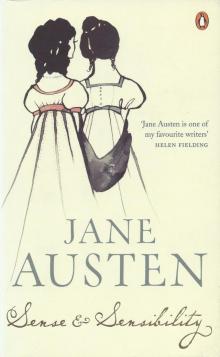 Sense and Sensibility
Sense and Sensibility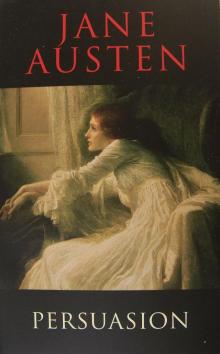 Persuasion
Persuasion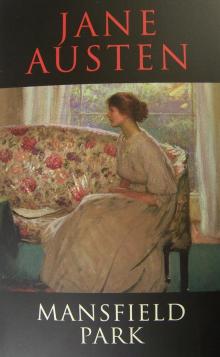 Mansfield Park
Mansfield Park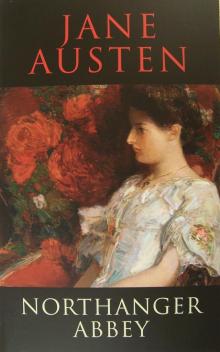 Northanger Abbey
Northanger Abbey Pride and Prejudice and Zombies
Pride and Prejudice and Zombies Pride and Prejudice
Pride and Prejudice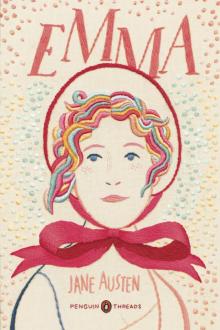 Emma
Emma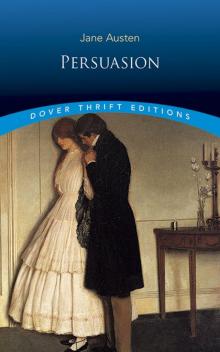 Persuasion (Dover Thrift Editions)
Persuasion (Dover Thrift Editions)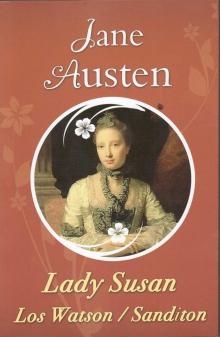 Lady Susan
Lady Susan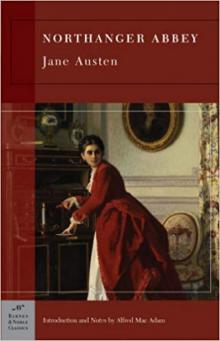 Northanger Abbey (Barnes & Noble Classics)
Northanger Abbey (Barnes & Noble Classics)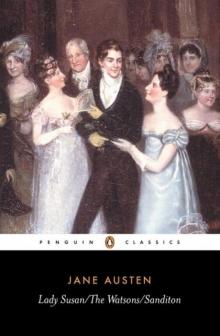 Lady Susan, the Watsons, Sanditon
Lady Susan, the Watsons, Sanditon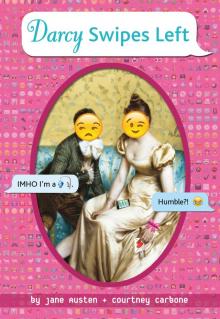 Darcy Swipes Left
Darcy Swipes Left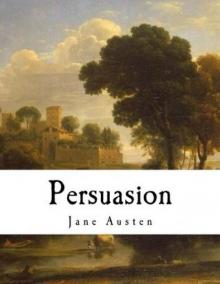 Persuasion: Jane Austen (The Complete Works)
Persuasion: Jane Austen (The Complete Works)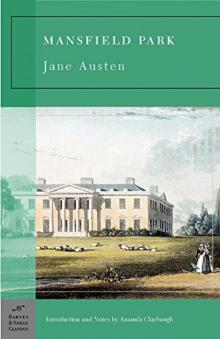 Mansfield Park (Barnes & Noble Classics Series)
Mansfield Park (Barnes & Noble Classics Series) Sense and Sensibility (Barnes & Noble Classics Series)
Sense and Sensibility (Barnes & Noble Classics Series)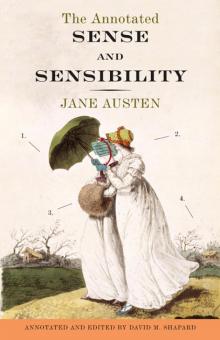 The Annotated Sense and Sensibility
The Annotated Sense and Sensibility Pride and Prejudice (Clandestine Classics)
Pride and Prejudice (Clandestine Classics)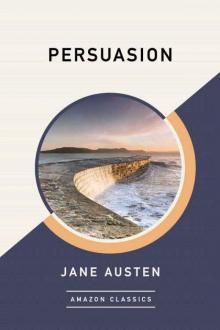 Persuasion (AmazonClassics Edition)
Persuasion (AmazonClassics Edition)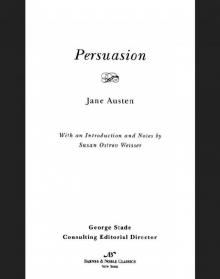 Persuasion (Barnes & Noble Classics Series)
Persuasion (Barnes & Noble Classics Series)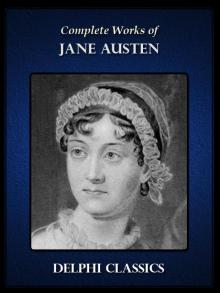 Complete Works of Jane Austen
Complete Works of Jane Austen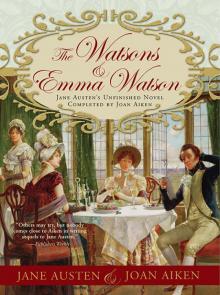 The Watsons and Emma Watson
The Watsons and Emma Watson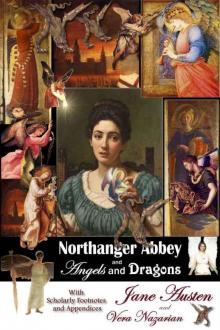 Northanger Abbey and Angels and Dragons
Northanger Abbey and Angels and Dragons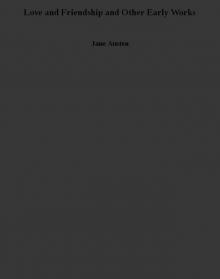 Love and Friendship and Other Early Works
Love and Friendship and Other Early Works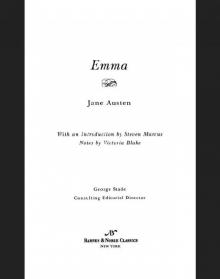 Emma (Barnes & Noble Classics Series)
Emma (Barnes & Noble Classics Series) Sanditon
Sanditon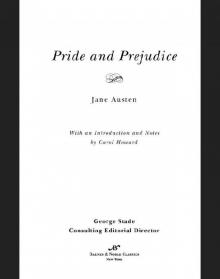 Pride and Prejudice (Barnes & Noble Classics Series)
Pride and Prejudice (Barnes & Noble Classics Series)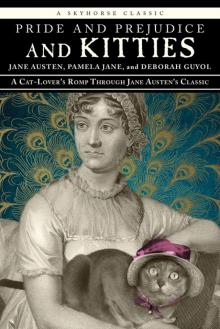 Pride and Prejudice and Kitties
Pride and Prejudice and Kitties The Annotated Northanger Abbey
The Annotated Northanger Abbey Oxford World’s Classics
Oxford World’s Classics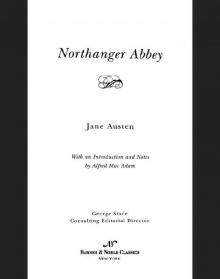 Northanger Abbey (Barnes & Noble Classics Series)
Northanger Abbey (Barnes & Noble Classics Series)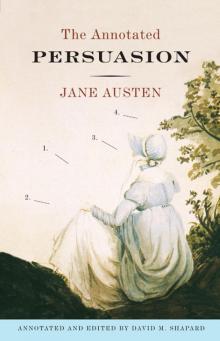 The Annotated Persuasion
The Annotated Persuasion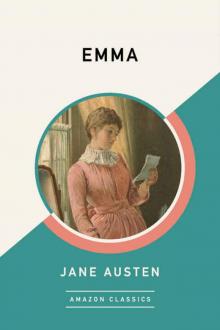 Emma (AmazonClassics Edition)
Emma (AmazonClassics Edition)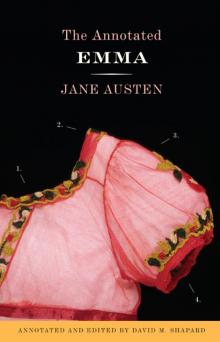 The Annotated Emma
The Annotated Emma The Annotated Mansfield Park
The Annotated Mansfield Park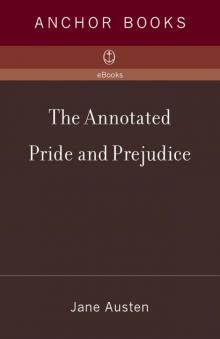 The Annotated Pride and Prejudice
The Annotated Pride and Prejudice